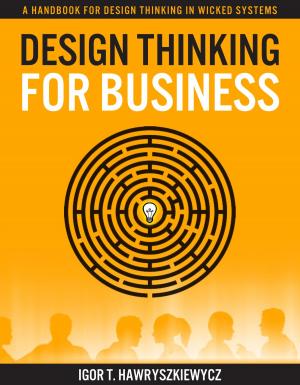Higher Intelligence
How to Create a Functional Artificial Brain
Nonfiction, Science & Nature, Technology, Robotics| Author: | Peter A J van der Made | ISBN: | 9781922204165 |
| Publisher: | Vivid Publishing | Publication: | February 20, 2013 |
| Imprint: | Language: | English |
| Author: | Peter A J van der Made |
| ISBN: | 9781922204165 |
| Publisher: | Vivid Publishing |
| Publication: | February 20, 2013 |
| Imprint: | |
| Language: | English |
This book is about a new technology that surpasses the capabilities of computer technology. It examines how the human brain functions, not as a control centre, but as a learning, interacting machine that evolves intelligence as it learns. Humans are not born with complete knowledge. A baby makes random movements with its arms and legs. Each movement results in proprioception feedback to the brain. The brain uses this information to fill its knowledge base and eventually the brain learns to control the limbs. Using the brain’s functions as a foundation a new, evolving technology is discussed. It has the capability to develop intelligence through learning at many different levels. From the mid 1940’s people have tried to recreate human-level intelligence in digital computers, with almost no success. The machines that are now called ‘smart’ or ‘intelligent’ are nothing of the kind. They are cause-and-effect machines that perform the same actions for every set of stimuli. These programs fail when an unknown set of stimuli is presented. In contrast, the brain learns when it is presented with an unknown situation, and applies existing knowledge to the problem. We also have the ability to compose great symphonies, write books, and create works of art. What then is the definition of intelligence? Intelligence is closely associated with awareness, creativity and the ability to learn. Why have these functions never been part of the way Artificial Intelligence has been built? Once we have created an intelligent machine, what will its impact be on society? Will robots take over all the jobs? How will we distribute wealth if we no longer need to go to work? Read about all this and much more in ‘Higher Intelligence’.
This book is about a new technology that surpasses the capabilities of computer technology. It examines how the human brain functions, not as a control centre, but as a learning, interacting machine that evolves intelligence as it learns. Humans are not born with complete knowledge. A baby makes random movements with its arms and legs. Each movement results in proprioception feedback to the brain. The brain uses this information to fill its knowledge base and eventually the brain learns to control the limbs. Using the brain’s functions as a foundation a new, evolving technology is discussed. It has the capability to develop intelligence through learning at many different levels. From the mid 1940’s people have tried to recreate human-level intelligence in digital computers, with almost no success. The machines that are now called ‘smart’ or ‘intelligent’ are nothing of the kind. They are cause-and-effect machines that perform the same actions for every set of stimuli. These programs fail when an unknown set of stimuli is presented. In contrast, the brain learns when it is presented with an unknown situation, and applies existing knowledge to the problem. We also have the ability to compose great symphonies, write books, and create works of art. What then is the definition of intelligence? Intelligence is closely associated with awareness, creativity and the ability to learn. Why have these functions never been part of the way Artificial Intelligence has been built? Once we have created an intelligent machine, what will its impact be on society? Will robots take over all the jobs? How will we distribute wealth if we no longer need to go to work? Read about all this and much more in ‘Higher Intelligence’.















